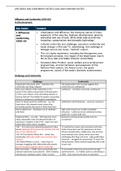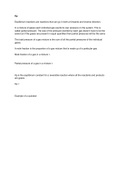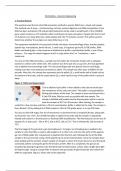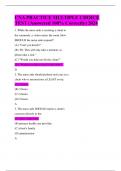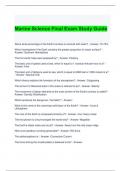Affluence and Conformity (1955-63)
In this document:
Challenge and Conformity
Challenge Conformity
Organisation Man book 1956 – indication that The Organisation Man concept suggests that
conformity was being critiqued conformity was widespread`
There was criticism of the conformity on TV – Levittowns – restrictive covenants, washing etc
speech to the National Association of Broadcasters
in 1961, and criticism of the advertising industry in
book by Packard ‘The Hidden Persuaders’ presenting
adverts as dangerous psychological manipulation
Some TV shows were less conformist – e.g. The Satisfaction with Eisenhower – post-war consensus
Open Mind 1956 showed Martin Luther King
presenting positive discussion of black Americans
News programmes – broadcast acts of challenge – High school courses on socially acceptable
Little Rock behaviour – California school celebrated turning
pupils into ‘custom-built men’
Hollywood films – sex sold – 1952 Supreme Court Businesses introduced personality tests for
ruling relaxed film code and allowed freedom of recruitment
expression. Imitation of Life 1959 – black hero who
looked after white actress’ daughter
1957 – first interracial relationship depicted in Blue TV watched by masses and promoted conformity –
Denim (although still censored the abortion that had Father Knows Best and The Adventures of Ozzie
been in the original play) sitcoms showed white, middle class, stay-at-home
1955 All That Heaven Allows film – mixed class mum domestic bliss. Shows which were more
relationship (although middle class character does challenging (Nat King Cole show – high profile Black
remarry) American – struggled for sponsorship. TV show The
1955 Rebel Without a Cause – James Dean as Honeymooners shows husband opposing wife’s plan
teenager struggling with relationship with parents to get a job
(but eventually recognises father’s authority)
Beat Generation – middle class young people who TV promoted conformist consumerism through
rejected materialism and authority – Allen Ginsberg, advertisements – 11.9 billion spent on advertising in
Jack Kerouac. Ginsberg’s poem ‘Howl’ covered 1960 – more spent on this than on education
, AFFLUENCE AND CONFORMITY NOTES (CLASS AND SUMMARY NOTES)
themes such as drugs, homosexuality and non-
conformity. Kerouac’s book ‘On the Road’ published
but had references to drug use and homosexuality
removed. However, beats were the minority and on
campuses it became a superficial new type of
conformity/fashion – genuine beats rejected these
new “Beatnik” followers as copycats/insincere.
Emergence of separate teenage music culture – Film – until 1956 interracial marriage could not be
Rock n’ Roll – Chuck Berry, Little Richard, Elvis shown on film and South Pacific 1958, depicting
Presley interracial relationship, nearly caused a race riot in
the South.
Anti-war movies such as Paths of Glory 1957
unpopular at box office
Senate hearings on juvenile delinquency revealed
that in fact the young were a “silent generation”
(conforming) – some instances of gang violence but
this was blamed on working mothers.
Rock n Roll music heavily criticised by older
generation – Time magazine heavily critical and
White Citizens’ Council thought rock n’ roll was
damaging white supremacy – but suggests it had
impact
Urbanization and Affluence
Significant Statistics
1950: 39.3 million cars 1960: 73.8 million cars.
1955 7.9 million new cars manufactured.
410,000 miles of interstate highways
1960 there were 228 McDonalds
1955 McDonalds franchise in Chicago suburbs made $100,000 per year
It was $0.15 for a hamburger
By 1960 7.6 million worked in service industries
Service industry jobs (white collar) increased from 21.2 million in 1950 to 27.2
million
The industrial workforce (blue collar) decreased by 3% from 39% to 36% by 1960
11 million of the 13 million houses built from 1948 to 1958 were in the suburbs.
1920 17% lived in suburbs, 1960 33% (mostly middle class whites)
Congress organized 810,000 subsidised public housing units
Teenage consumer economy owned 10 million record players, 1 million TV sets, 13
million cameras.
Spending $20 million on lipstick, $25 million on deodorants, $9 million on home hair
perming and over $1.5 billion on entertainment in 1958
One third of 18 to 19 year old girls were married meaning young teenage wives were
big spenders on furniture.
What does this show about society


